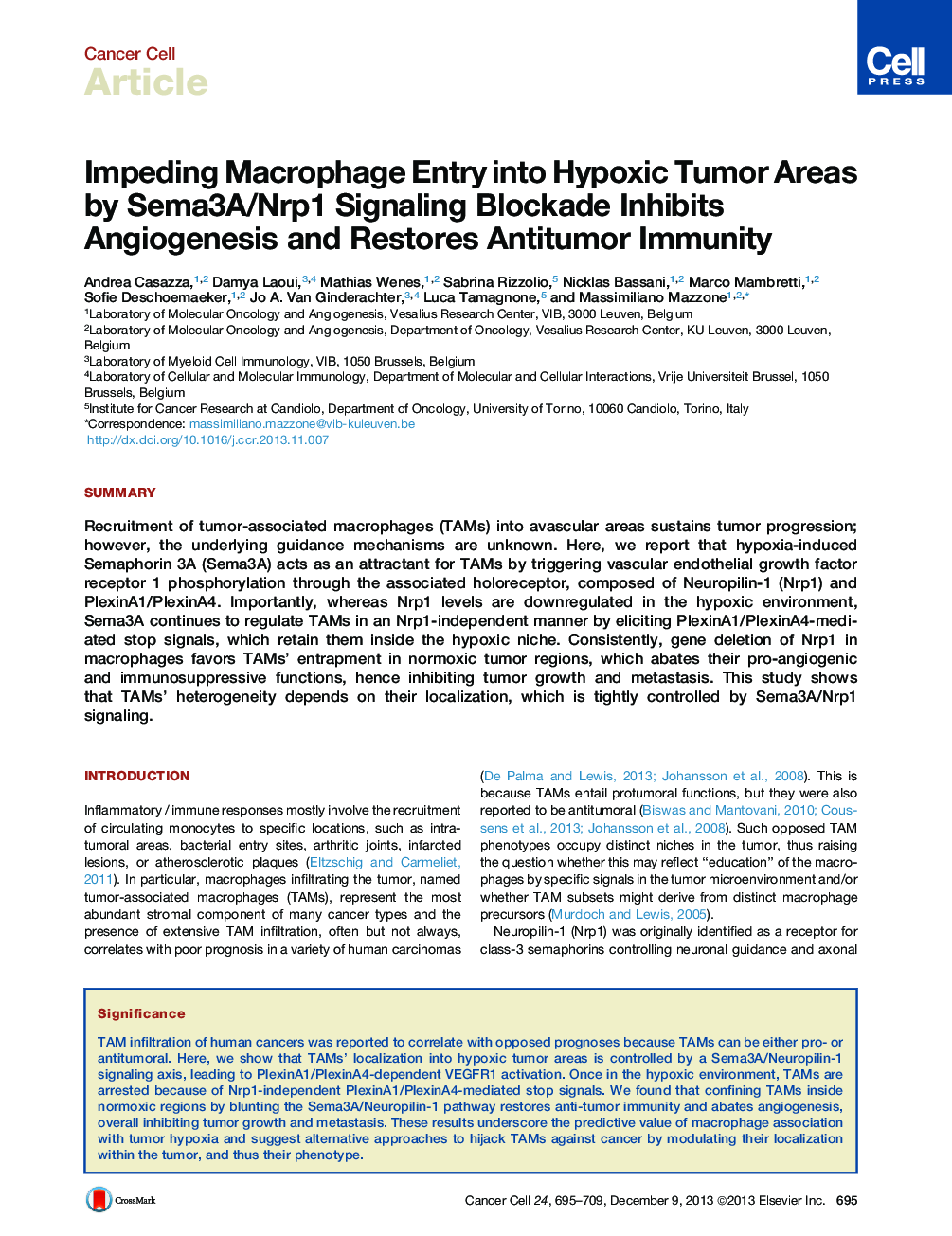| Article ID | Journal | Published Year | Pages | File Type |
|---|---|---|---|---|
| 2106866 | Cancer Cell | 2013 | 15 Pages |
•Nrp1 is required for TAM attraction toward hypoxia-induced Sema3A•Nrp1 repression by hypoxia allows Sema-3A-mediated TAM retention in hypoxic niches•TAM attraction needs Nrp1/VEGFR1/PlexinA1/A4 whereas TAM retention requires PlexinA1/A4•Nrp1 deficiency excludes TAMs from hypoxic niches that favor antitumor responses
SummaryRecruitment of tumor-associated macrophages (TAMs) into avascular areas sustains tumor progression; however, the underlying guidance mechanisms are unknown. Here, we report that hypoxia-induced Semaphorin 3A (Sema3A) acts as an attractant for TAMs by triggering vascular endothelial growth factor receptor 1 phosphorylation through the associated holoreceptor, composed of Neuropilin-1 (Nrp1) and PlexinA1/PlexinA4. Importantly, whereas Nrp1 levels are downregulated in the hypoxic environment, Sema3A continues to regulate TAMs in an Nrp1-independent manner by eliciting PlexinA1/PlexinA4-mediated stop signals, which retain them inside the hypoxic niche. Consistently, gene deletion of Nrp1 in macrophages favors TAMs’ entrapment in normoxic tumor regions, which abates their pro-angiogenic and immunosuppressive functions, hence inhibiting tumor growth and metastasis. This study shows that TAMs’ heterogeneity depends on their localization, which is tightly controlled by Sema3A/Nrp1 signaling.
Graphical AbstractFigure optionsDownload full-size imageDownload high-quality image (162 K)Download as PowerPoint slide
